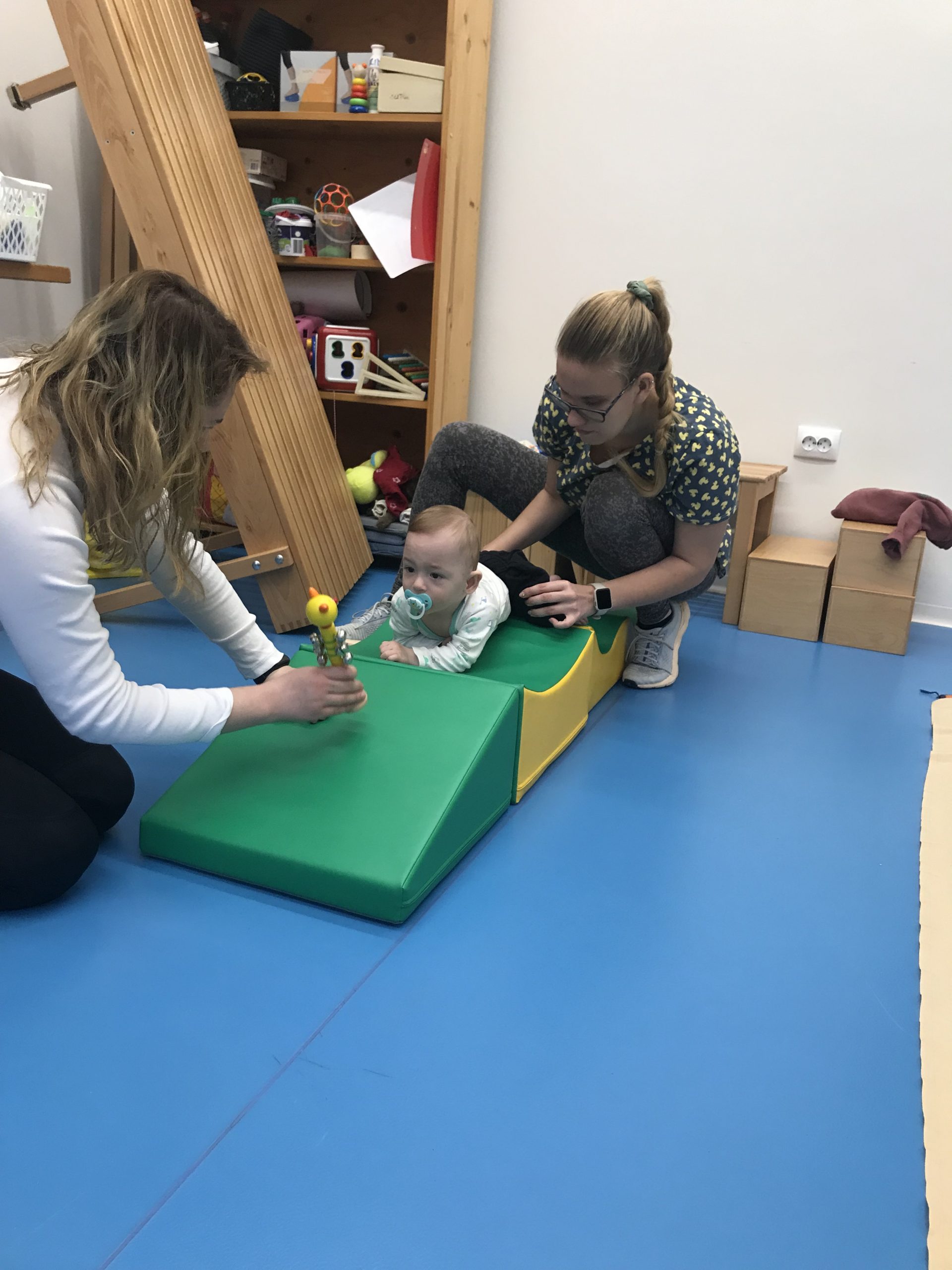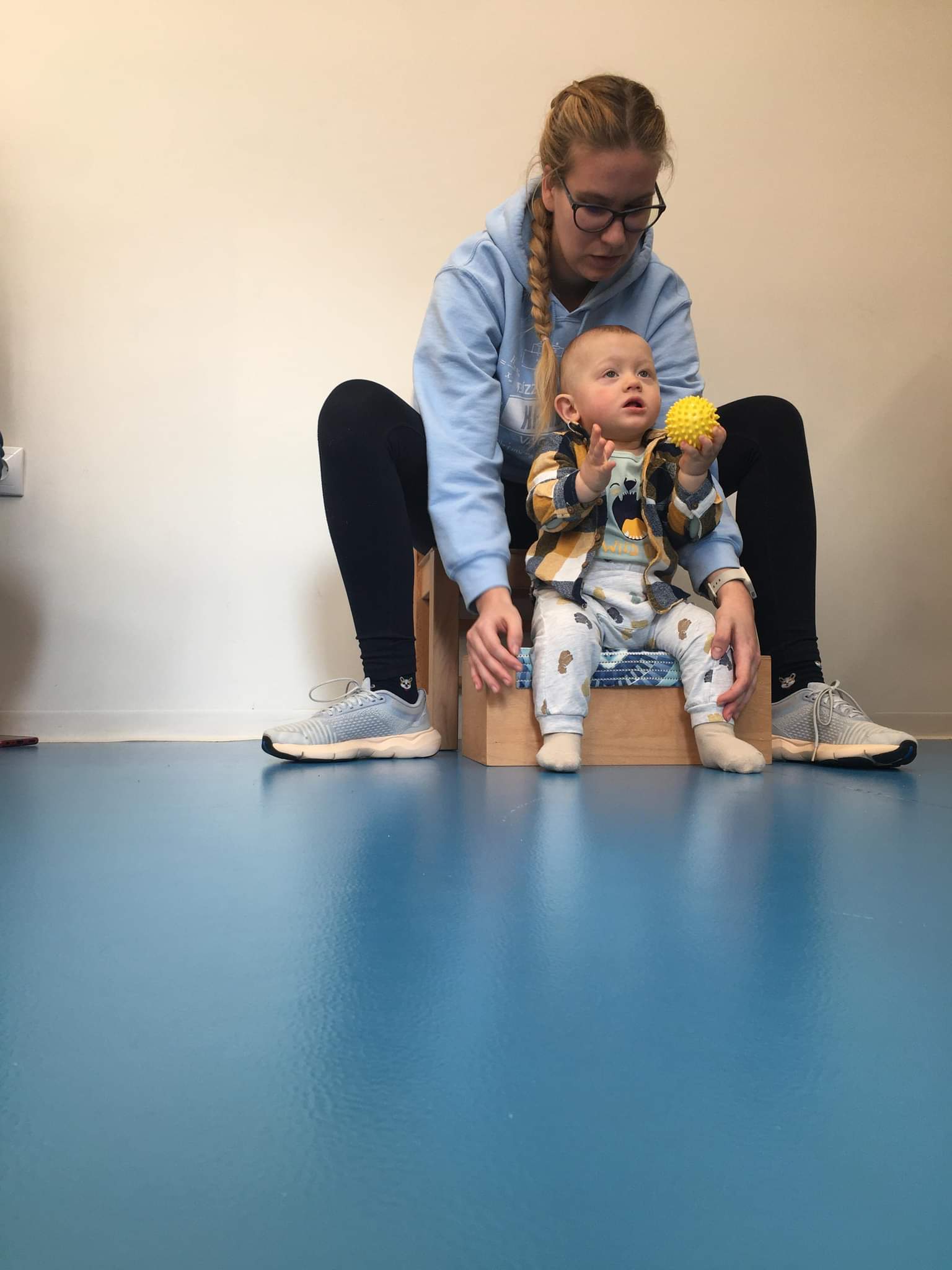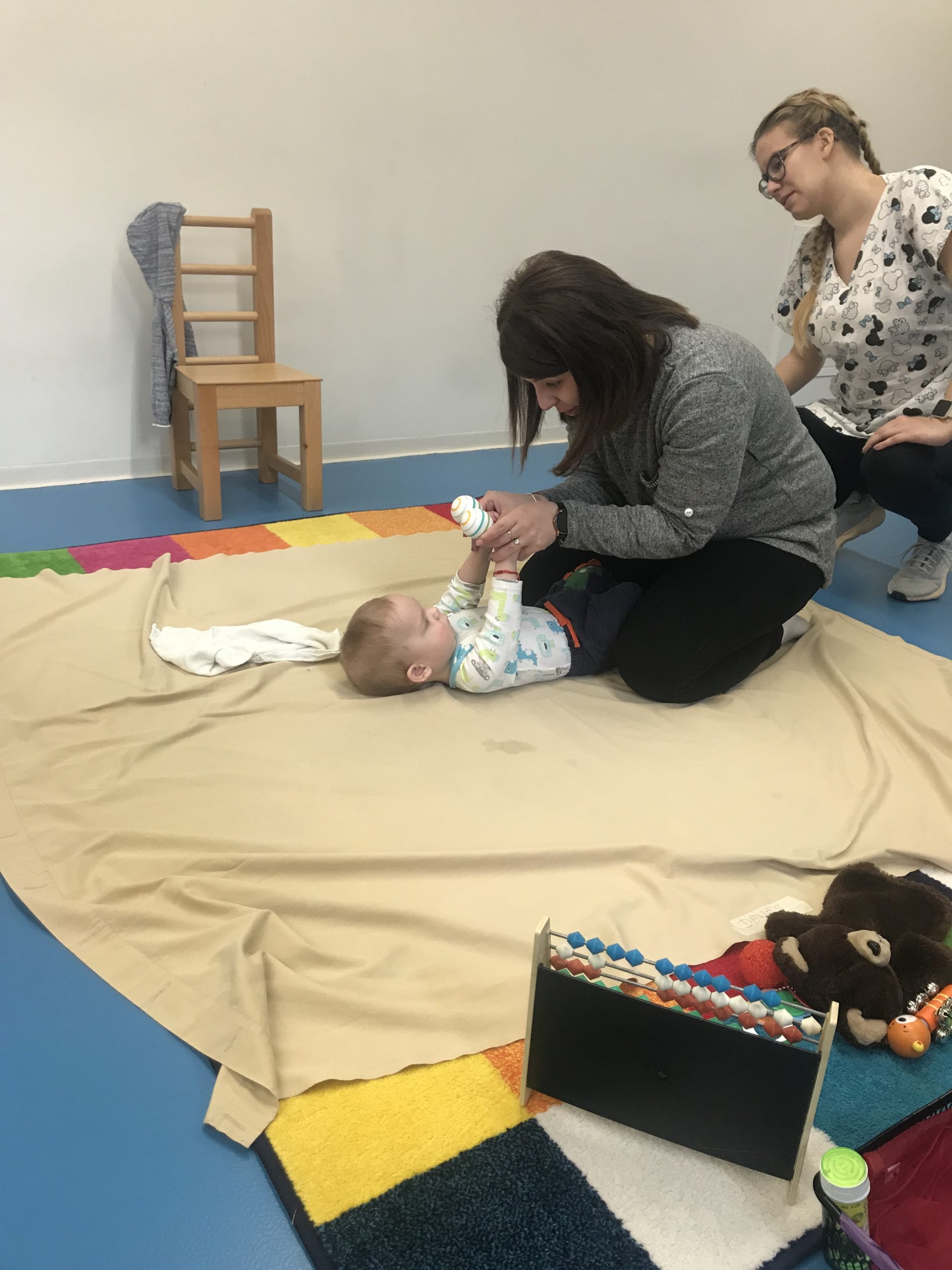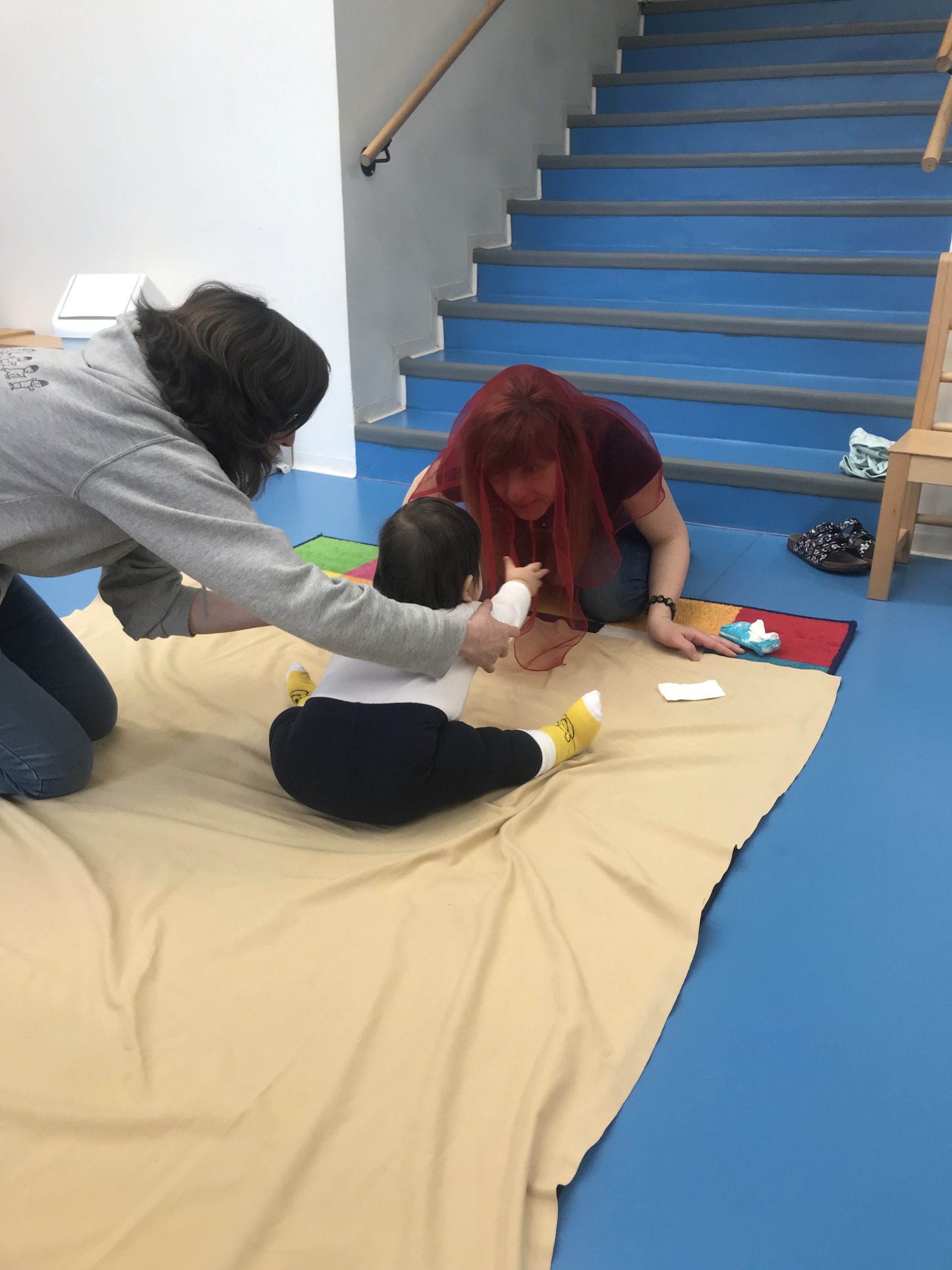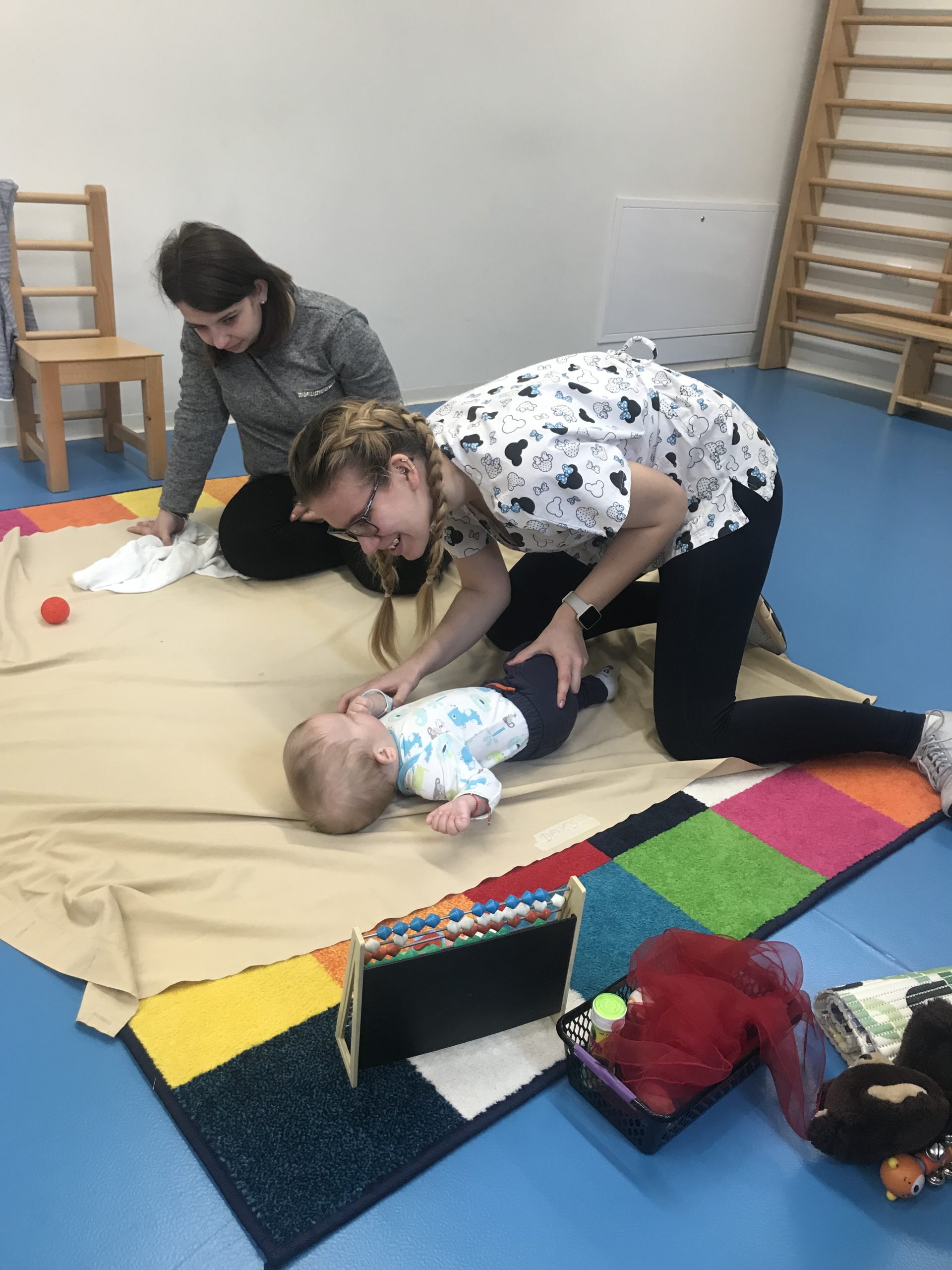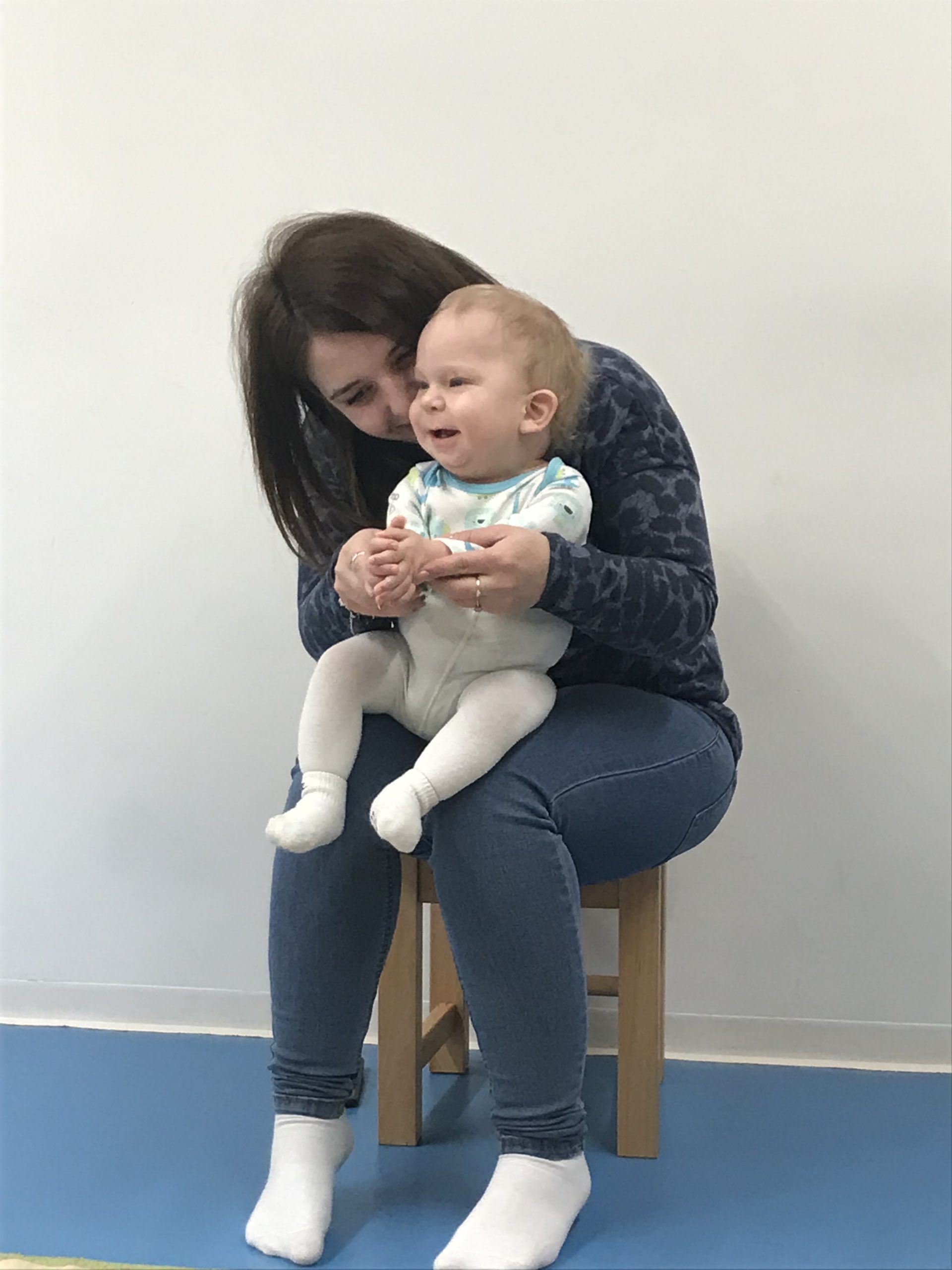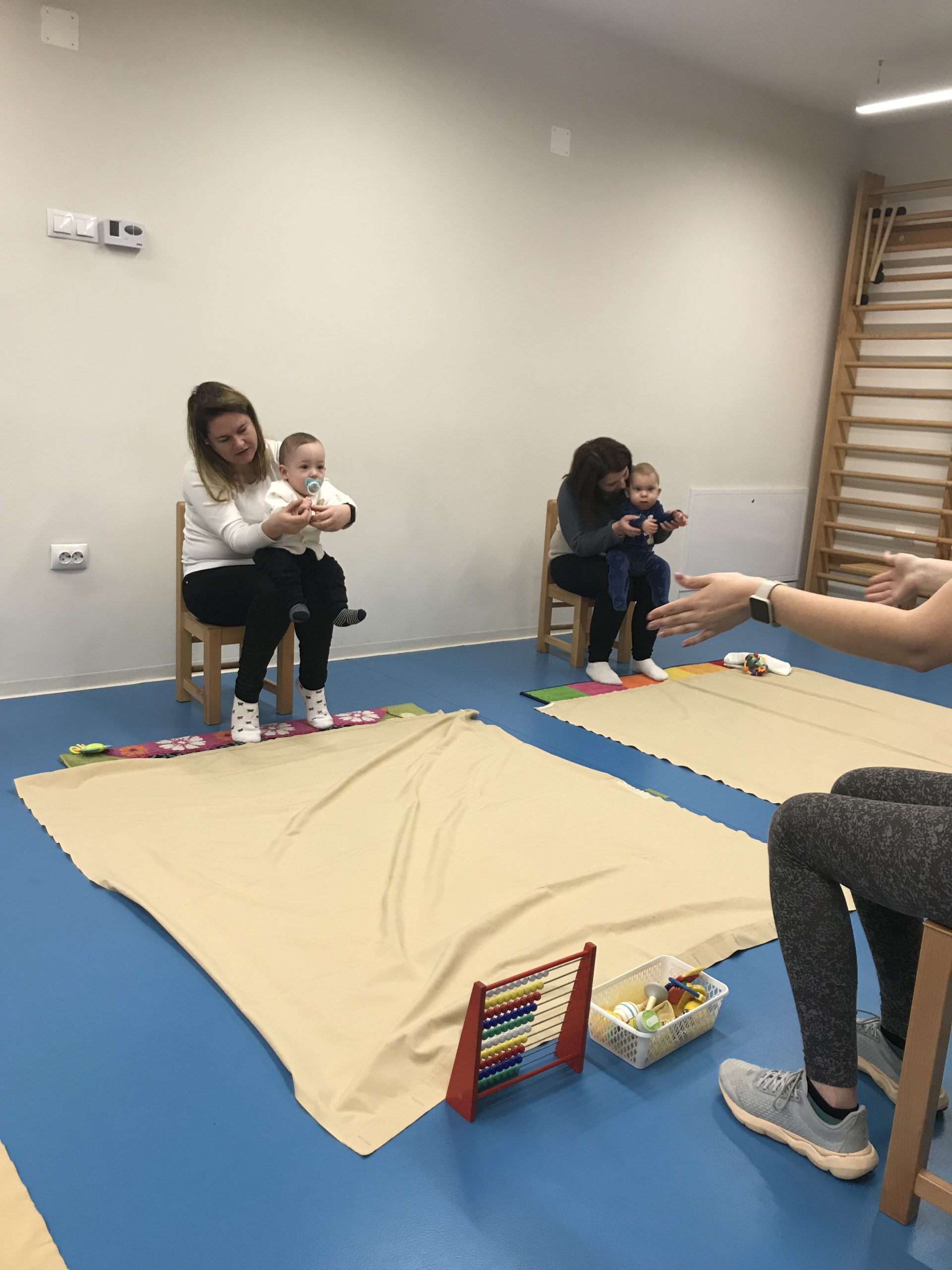Baby and parents group
A 4-week conductive program that involves both a caregiver and a child with motor disabilities is an excellent way to promote the child’s development while providing support and education to the caregiver. Such programs typically aim to enhance the child’s physical, cognitive, and social development while equipping the caregiver with the skills and knowledge necessary for continued support at home.
Here’s an outline for a caregiver and child 4-week conductive program:
Week 1: Assessment and Orientation
- Initial Assessment: Begin with a thorough assessment of the child’s abilities, including motor skills, communication, cognitive development, and social interaction. Assessments should be adapted to the child’s age and developmental stage.
- Orientation: Familiarize both the child and the caregiver with the conductive education setting, instructors, and daily routines. Create a supportive environment that helps both feel comfortable and engaged.
- Setting Individual Goals: Collaborate with the caregiver to establish specific and measurable goals for the child’s development during the program. Ensure that the caregiver is actively involved in this goal-setting process.
- Caregiver Training: Provide an orientation and training for caregivers, including an overview of conductive education principles and techniques. Equip caregivers with the knowledge and skills they need to support their child during and after the program.
Week 2-3: Intensive Conductive Education
- Daily Sessions: Implement daily sessions that involve both the child and the caregiver. Each session should include a variety of activities designed to promote mobility, fine motor skills, communication, and social interaction.
- Mobility and Motor Skills: Focus on activities that encourage mobility, balance, coordination, strength, and fine motor skills development. Activities may include exercises, walking, reaching, grasping, and using adaptive equipment if necessary.
- Communication Skills: Integrate speech and communication exercises into daily routines. Encourage both verbal and non-verbal communication between the child and caregiver. Teach the caregiver techniques for facilitating communication.
- Social Interaction: Promote social interaction between the child and caregiver through structured play, interactive games, and shared experiences. Teach the caregiver how to encourage and reinforce social skills development.
Week 4: Progress Evaluation and Transition Planning
- Mid-Program Assessment: Conduct a mid-program assessment to track the child’s progress. Adjust individualized plans as needed to address evolving needs.
- Transition Planning: Collaborate with the caregiver to create a transition plan for continued support at home. Ensure that the caregiver feels confident in implementing conductive education principles and techniques.
- Celebration and Feedback: Celebrate the child’s achievements during the program. Share feedback and recommendations with the caregiver, highlighting areas of progress and areas that may need ongoing attention.
- Resource Sharing: Provide the caregiver with resources, materials, and strategies they can use at home to continue supporting their child’s development.
Throughout the program, maintain open and regular communication with the caregiver to provide guidance and address any questions or concerns. Emphasize the importance of the caregiver’s role in their child’s ongoing development, fostering a collaborative and supportive partnership between the child and caregiver.
Apart from gaining advice, better understanding of the child’s condition, it is also a great opportunity for parents to meet other families of children with similar difficulties.
Looking for another age group?
